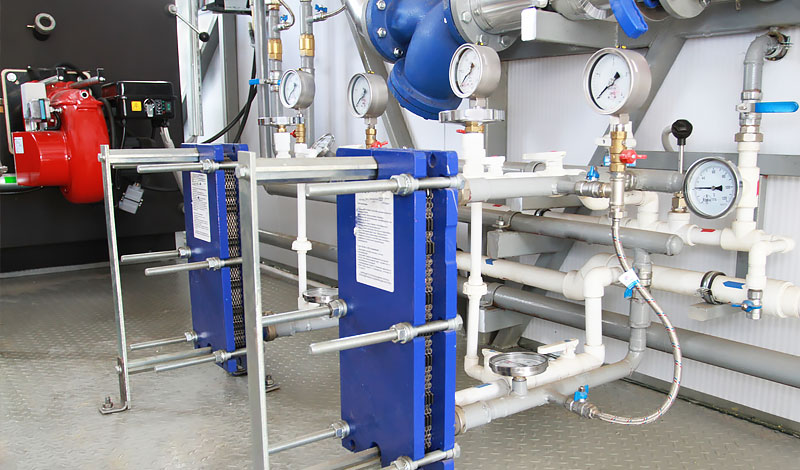Heat is useful, but making it costs money. Heat recovery systems capture that thermal energy and make it available for space conditioning or water heating, increasing energy efficiency and reducing operating costs. Despite its benefits, heat recovery is not the best fit for every application. Careful consideration is necessary to ensure that it’s right for your facility.
Ventilation
In the winter, energy is wasted when warm, conditioned air is exhausted outside. Heat recovery ventilation (HRV) devices capture that heat and transfer it to the incoming cold supply air. This reduces heating costs and makes way for the installation of smaller (and less expensive) HVAC equipment.
Commonly used HRV devices include flat plate air-to-air heat exchangers, rotary heat and energy wheels and heat pipes. All require adjacent and parallel outdoor air intake and exhaust ducts. For remote heat transfer, install a run-around loop system that includes heat transfer coils in the intake and exhaust ducts. A pump circulates the heat-transfer fluid, moving the heat to where it’s needed.
Space heating
Some areas of a building, such as the kitchen or laundry, often have too much heat. HRV devices can pull that heat out and move it to other areas, saving energy and improving comfort. Heat pumps are particularly suited for removing heat from a source (air or water) and making it available for other uses. For example, a heat pump can remove excess heat from a laundry facility and use it to provide hot water in other areas of a building.
Water heating
Water heating is a good application for high temperature heat recovery. Using recovered heat to preheat water is cost-effective in facilities with significant hot water needs, such as hotels, restaurants and laundries.
Shell and tube heat exchangers are most commonly used in these applications. They transfer heat between two separated fluids, with one flowing through the shell and the other through the tube. Hot gas heat exchangers recover heat from refrigeration systems. Hot drain heat exchangers recover waste heat from water in commercial laundries and kitchens.
Facilities with steam systems can install a heat exchanger in the condensate return, where it transfers heat to water circulating to the hot water tank.
Combined heat and power
Combined heat and power (CHP) systems provide onsite power generation and heat recovery. Electricity is generated with combustion turbines or reciprocating engines, and a heat exchanger transfers exhaust heat to a waste heat boiler.
CHP systems provide a number of benefits for commercial facilities, including increased energy efficiency, improved power reliability and reduced environmental impact. However, CHP systems typically require significant upfront costs, and they may not be the right fit for every application. Carefully evaluate your energy and operational needs before making the investment.
Installing heat recovery systems
HRV devices are complex and many factors go into designing an effective system. Optimizing performance requires close collaboration between facility managers and the system designer or installer.
